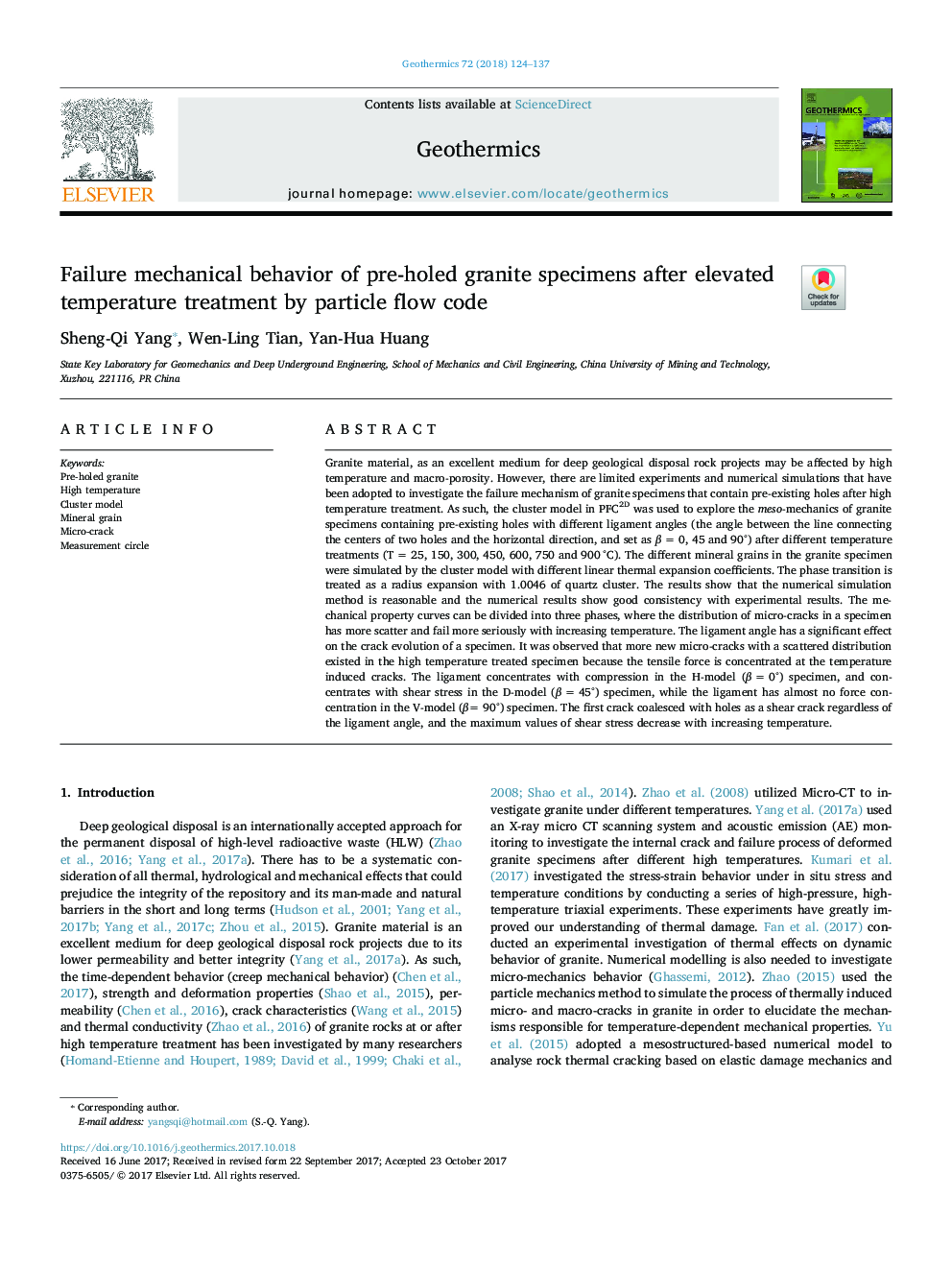| Article ID | Journal | Published Year | Pages | File Type |
|---|---|---|---|---|
| 8088616 | Geothermics | 2018 | 14 Pages |
Abstract
Granite material, as an excellent medium for deep geological disposal rock projects may be affected by high temperature and macro-porosity. However, there are limited experiments and numerical simulations that have been adopted to investigate the failure mechanism of granite specimens that contain pre-existing holes after high temperature treatment. As such, the cluster model in PFC2D was used to explore the meso-mechanics of granite specimens containing pre-existing holes with different ligament angles (the angle between the line connecting the centers of two holes and the horizontal direction, and set as β = 0, 45 and 90°) after different temperature treatments (T = 25, 150, 300, 450, 600, 750 and 900 °C). The different mineral grains in the granite specimen were simulated by the cluster model with different linear thermal expansion coefficients. The phase transition is treated as a radius expansion with 1.0046 of quartz cluster. The results show that the numerical simulation method is reasonable and the numerical results show good consistency with experimental results. The mechanical property curves can be divided into three phases, where the distribution of micro-cracks in a specimen has more scatter and fail more seriously with increasing temperature. The ligament angle has a significant effect on the crack evolution of a specimen. It was observed that more new micro-cracks with a scattered distribution existed in the high temperature treated specimen because the tensile force is concentrated at the temperature induced cracks. The ligament concentrates with compression in the H-model (β = 0°) specimen, and concentrates with shear stress in the D-model (β = 45°) specimen, while the ligament has almost no force concentration in the V-model (β= 90°) specimen. The first crack coalesced with holes as a shear crack regardless of the ligament angle, and the maximum values of shear stress decrease with increasing temperature.
Related Topics
Physical Sciences and Engineering
Earth and Planetary Sciences
Geochemistry and Petrology
Authors
Sheng-Qi Yang, Wen-Ling Tian, Yan-Hua Huang,
